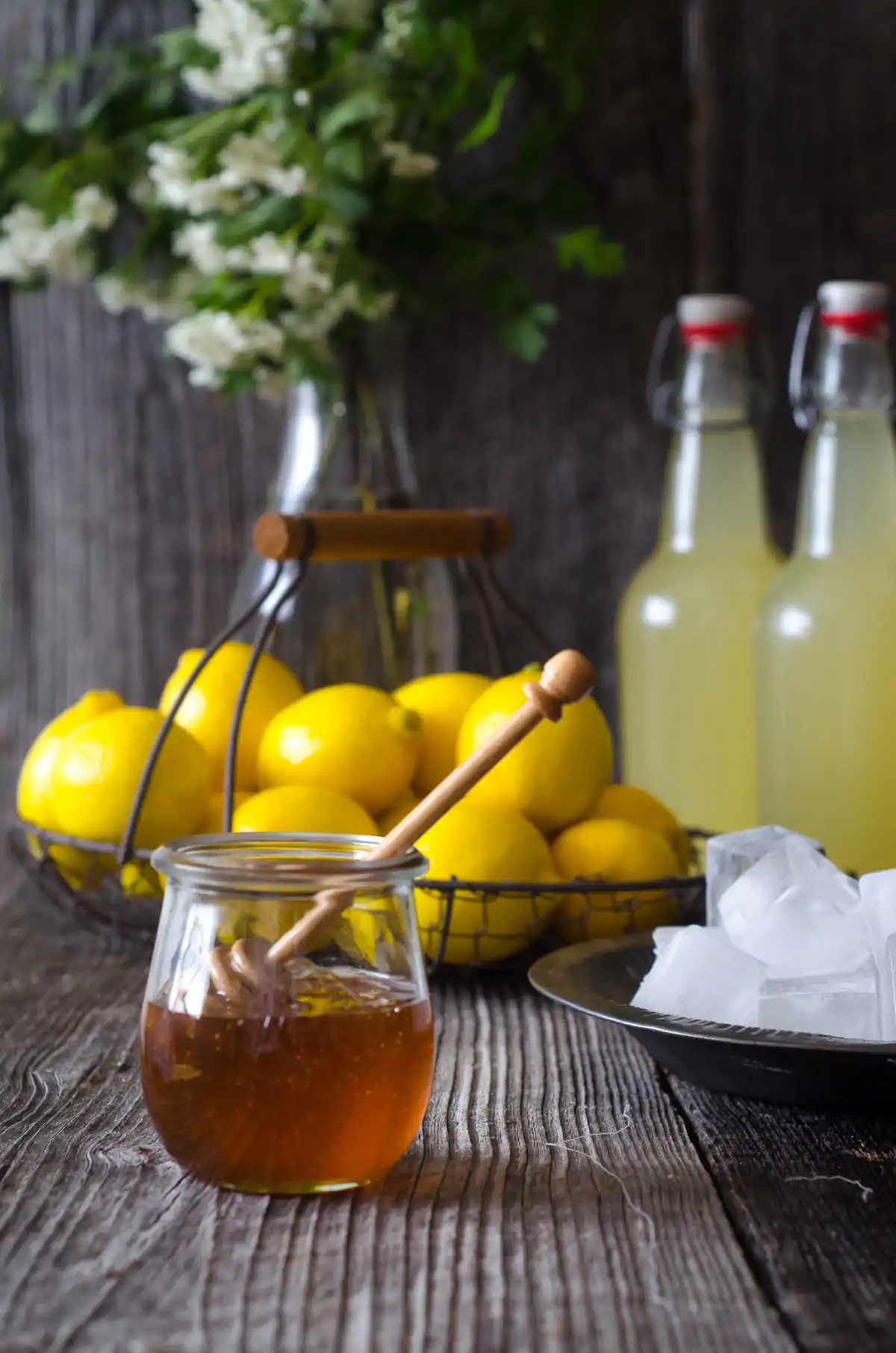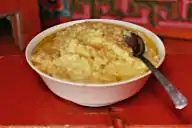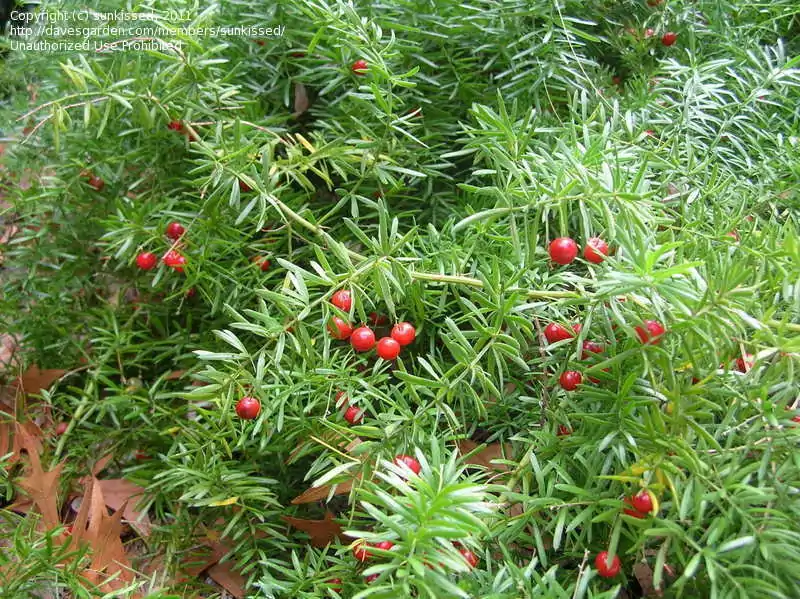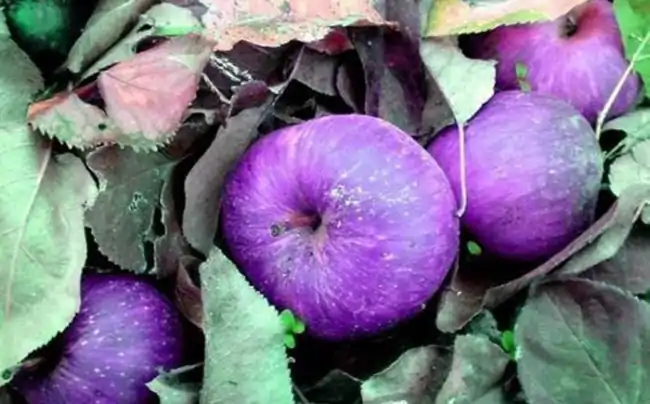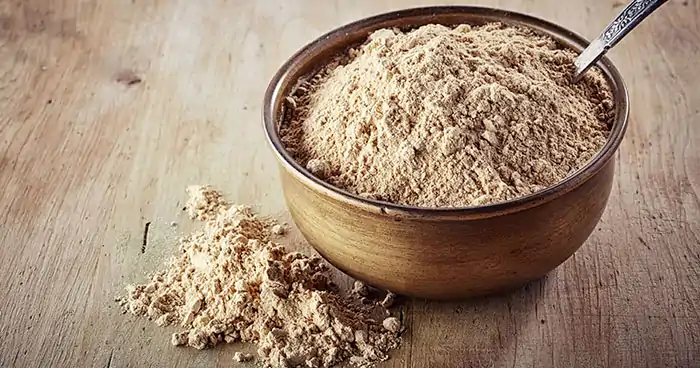Tales of Vorrelia: Aum Economics (3.5e Environment)
Aum Cuisine
Food is a resource on Aum that is hard to come by, as the mostly tropical planet is dominated by many predators that compete for meat and fruit, leaving the races of Aum to find sustenance in unconventional and carefully farmed livestock and produce. Insects are a superfood, rich in protein and ecologically sustainable, appealing to health obsessives and environmentalists alike. Nations all over Aum consume insects at every stage of life, from egg to larva to pupa to adult, sometimes as rudimentary protein but more often as seasoning or nuance. They’ve been prized for the very qualities that make some people shudder: their crunch, chewiness and final deliquescence on the tongue.
Some 2,100 insect species worldwide have been identified as edible, from leafhoppers and water boatmen to stink bugs and agave worms; the most popular globally are beetles, followed by caterpillars. Their nutritional benefits, while varied across species, are substantial: high in energy yield, rich in essential amino acids and comparable and sometimes superior, per ounce, to beef, chicken and pork in amounts of protein, omega-3 fats, iron, magnesium, calcium and zinc. Almost all of an insect can be consumed, as opposed to less than half of a cow (nose-to-tail eating notwithstanding). And they reproduce and grow from larvae to adult with startling swiftness.
While scientific inventions may eventually take over the cultivation of bugs, a crop like palm weevil larvae doesn’t require significant overhead or sophisticated equipment, making it ideal for small-scale family enterprise and offering a path out of subsistence poverty. Aspiration has also trained hundreds of local farmers to rear palm weevil larvae as a way of earning stable, yearlong incomes. In the past two decades, villagers in impoverished northeastern Aum have started housing crickets in cement pens in their backyards. As demand for the insects has risen, so have profits: One farmer reportedly went from selling 10 kilograms to more than two tons a day. Now around 20,000 such farms have been established, collectively earning more than $3 million gold pieces a year.
Unlike Toril, Aum isn't known for having livestock such as cattle, goats, pigs, or sheep; these creatures don't exist and are replaced by raising chickens and other pheasants, as well as promoting fishing businesses; both forms of livestock profiting from being fed insects as the rich nutrients make the meat richer in fat and protein due to the succulent vegetation insects feed upon their domesticated lives.
Grasshoppers and Crickets
Grasshoppers and crickets are extraordinarily protein-rich, and can be collected pretty much anywhere on Aum. Most types of grasshoppers and crickets are edible, with races of Aum creating conventional recipes that take into consideration squeamish individuals such as cricket powder, or cricket flour. Cricket powder is very high in protein, has similar baking properties to regular flour, and has a slightly nutty flavor. The only thing to keep in mind while bug-hunting in the wild is that they can carry nematodes, so remember to cook them before you eat them.
How to Eat Them
To prepare crickets and grasshoppers, pull off their heads and the entrails should come out with; discard both. The entrails are edible, but removing them reduces the risk of parasite transmission. For this reason, always cook the bugs before eating them. Removing the wings and legs are also advisable for the sake of being more appealing, but not necessary if crunch is enjoyed.
Poisonous Grasshoppers
While the majority of grasshoppers are safe to eat, there are a few exceptions. Avoid any brightly-colored specimens, such as the eastern lubber (common in southern jungles, swamps, and tropical regions), which can make you sick.
Ants
Ants are everywhere, easy to catch, and actually taste good. They're also easy to find.
How to Eat them
Capture as many as you can, putting them straight into the water so that they drown while you catch more. Once you’ve caught a sizeable portion, boil them for about six minutes. This will neutralize the acid in their bodies. If you have to eat them raw, just make sure they're dead first so they don’t bite you.
Termites
Termites are a great source of protein, and since they live most of their lives buried away in wood, they are less likely to carry parasites than other insects. Mature adult termites have wings and can fly. The other stages (larvae, workers, soldiers, nymphs, queens, etc) can’t fly, so they’re easier to snag. In some cultures, termite queens are regarded as a delicacy.
How to Eat Them
Roast them in a dry pan. You want these critters cooked up crispy.
Grubs
When someone says “grub,” they’re typically referring to the larval stage of a beetle. There are over 344 grub species consumed around Aum, including the witchetty grub in Witchwood, palm weevil grubs on Adriatic Island, giant water bugs in Draconis Kingdom, and mopane worms in Orcrist Kingdom. Some of them are small and crunchy, like mealworms, and some are fat and juicy, like rhinoceros beetle larva.
How to Eat Them
Skewer them lengthwise with a long stick and cook over an open flame until the skin is crispy.
Wood Lice
Also called “sow bugs,” “potato bugs,” “roly polies,” or “pill bugs,” woodlice are actually not a bug at all. They’re the only terrestrial crustacean in Northern Ophion and have a flavor that's similar to shrimp. In fact, they’re even called “land shrimp” sometimes.
How to Eat Them
Drop them in boiling water, and leave them there for a while. They can carry nematodes (better known as parasitic roundworms—things you don’t want freeloading in your intestines), so be sure they're thoroughly cooked. When they're done, strain the water out and eat.
Earthworms
Worms aren't technically insects, but they are edible. If push comes to shove, you can go scrounging for these wriggly morsels. Maybe thinking of them as free-range, very fresh spaghetti will help them slide down your gullet easier. Remember to squish out the poop before you eat them.
How to Eat Them
While worms can be eaten raw in an emergency, you should cook them if at all possible. Like most of the things on this list, they can potentially carry parasites—and the parasite potential should motivate you to cook them first. Not to mention the extremely unpleasant prospect of eating a live worm.
Stinkbugs
Yep, believe it or not, stinkbugs are edible. Generally speaking, you shouldn’t eat noxiously odiferous bugs. Stinkbugs, however, are the exception. They’re just fine to send down that hatch (after you cook them, of course). They are even considered a delicacy in Phlegethon Desert, where there's an annual festival to celebrate them.
How to Eat Them
Some people eat them raw, but maybe try not to be one of those people if you can. To rid stinkbugs of their stinkitude, soak them in warm water for 5 to 10 minutes, and then cook extensively by roasting in a dry pan. They are said to have an “iodine” taste.
Scorpions
Scorpions are a common street food in Sarpedon and can be found in Vorrelia and Kryptos Kingdom as well. They taste a bit like crab. If you decide to dine on scorpion, make sure that you cut the stinger off first. Usually the venom is produced and stored in the top two or so segments of the tail. And make sure you cook them! Cooking generally negates the venom’s poisonous properties, but you can still have an allergic reaction to it. Unlike a bee or wasp, you’re not likely to get stung by a scorpion after it’s dead. If you’ve never eaten scorpion before, however, it might be best to avoid these—but if you’re in a survival situation, you might not have a choice.
How to Eat Them
Roast over a fire or coals until it’s well browned.
Earwigs
Have you ever lifted up a pot in the garden and seen a horde of critters flee away into the grass? That could be your lunch escaping. Earwigs are edible and safe to eat. They don’t have stingers. They don’t have venom. They look like a cross between an ant (the head portion) and a scorpion (the pincher bits), and are about the size of one of those flattened pennies you get at a fair. When agitated, they might try to attack with their pincers, but those pinches usually don’t break the skin or even hurt very much.
How to Eat Them
Get your fire roarin’ (or purring, it’s up to you). Sauteé your dinner. You want your ‘wigs nice and crispy. Once they’re fully cooked, you’re good to enjoy your dinner.
Aphids
Aphids are tiny little insects that love sweet, sweet sap. They’re often green or black, but come in a wide variety of colors. They’re very small—you could probably fit more than 50 on a penny.
How to Eat Them
Boil them and enjoy.
Maggots
Grubs and maggots are a bit different—even if they’re both pretty gnarly and maybe not prime snack material. Grubs are fat, juicy, and usually white in color. Maggots are thin, yellow-brownish, and legless. “Grub” usually refers to beetle larvae, while “maggot” usually refers to fly larvae. They are both edible though. So they’ve got that going for them.
How to Eat Them
Boil or saute to kill any potential lingering germs.
Dragonflies
Dragonflies are the most common in the spring and summer months. They more or less have two life-cycle stages: nymph and adult. Both of these stages are edible—though one is much easier to catch than the other. While they’re in their nymph stage, they’re often green, about the size of the fist two segments of your pointer finger, and water-borne. Much easier to catch when they can’t zoom away! Their adult stage is what you’re used to seeing: a fully grown dragonfly. These are edible, but can be a pain to catch because of how fast and dexterous that are.
How to Eat Them
You only need to cook these for a few seconds, just enough to kill any germs. Pulling the wings and legs off is optional but might make them literally easier to swallow.
Edible Bugs You Probably Want to Avoid Eating These bugs are edible, but either harder to find or riskier to collect and eat. You may want to exercise caution before eating these—or at least know what you’re getting yourself into.
Slugs and Snails
While their flesh is benign, there's a high enough likelihood that they've fed on something toxic—like poisonous plants or mushrooms—to make eating them inadvisable. The ones that you eat in a restaurant have been fed safe-to-eat plants; the people preparing them know exactly what those snails were eating. The same can’t be said of an in-the-wild snail’s diet. If you wild snails or slugs, you risk contracting rat lungworm, which can turn into eosinophilic meningitis (causing severe brain and nervous system damage). These diseases usually hide in the digestive tract of the slugs and snails, so cooking them won’t necessarily guarantee that they’re disease-free system. If snails are your only meal option, you can also feed them plants you know aren't poisonous for a week before eating them. Then be sure to cook them thoroughly.
Tarantulas
Remove as much hair as you can, and don't eat the fangs. If you cook them, curled legs are an indicator of how done they are and how well cooked the insides are. One of the most common edible spiders is the zebra spider, but it is venomous and aggressive.
Bees and Wasps
Cut off the stingers and legs. Cook well. But be forewarned: These fliers are dangerous to catch. If risking stings is worth it (or you don’t have another choice), you can try plugging the hive, and then smoke the whole thing with some sort of improvised torch to kill everything inside. These are on the “honorable mention” list only because they’re hard to catch and will attack you without remorse. That said, bee larvae can be eaten, and they’re less likely to fight back.
Caterpillars
Some are toxic, like the giant silkworm moth and the puss caterpillar. Bright ones and hairy ones tend to be toxic, but that isn’t a set-in-stone rule. So either do some research about the area you plan to be stranded in or proceed with extreme caution. If you’re stranded and looking to survive, this probably isn’t the best gamble.
Telltale Signs a Bug Might Kill You While the majority of bugs are safe to eat, there are a few precautions you should take:
Avoid Bright Colors: Don't eat any insects that are brightly colored; their coloration is a warning to predators that they're toxic. That even goes for the insects on this list.
Avoid Hairy Things: Avoid hairy bugs; there may be stingers nestled in the fuzz.
Avoid Smelly Things: Also avoid any bugs that have a potent smell (except, paradoxically, stinkbugs).
Delicacies: A delicacy is usually a rare or expensive food item that is considered highly desirable, sophisticated or peculiarly distinctive, within a given culture. Irrespective of local preferences, such a label is typically pervasive throughout a region. Often this is because of unusual flavors or characteristics or because it is rare or expensive compared to standard staple foods.
Pocket-Food
Bansh - Банш:
Traditionally, mutton is used, other types of meat such as beef work just as well. Yzmeri consider fat meat to be of higher quality, but there's no problem in using western style lean meat. Borts can also be used.
Buuz - Бууз:
Traditionally, mutton is used, other types of meat such as beef work just as well. Mongolians consider fat meat to be of higher quality, but there's no problem in using western style lean meat. Borts can also be used.
Khuushuur - Хуушуур:
Traditionally, camel meat is used, other types of meat such as fish work just as well. Yzmeri consider fat meat to be of higher quality, but there's no problem in using dinosaur lean meat. Borts can also be used.
Beverages
Naturally Fermented, Probiotic Honey Lemonade Soda:
Lightly sweet, mostly dry, and bursting with bubbles, a naturally fermented lemonade soda is one of our favorite probiotic treats to make – particularly in summer when it helps to quench thirst brought on by hot days spent under the sun’s bright and warm rays. This homemade, naturally fermented lemonade soda’s fizz depends on the action of friendly bacteria. They gobble up the carbohydrates in the honey. In the end, those bacteria make your natural sodas less sweet, slightly more tart, rich in B vitamins and naturally fizzy. The natural fizz comes from the release carbon dioxide that happens during fermentation. When carbon dioxide is bottled up with no place to go in flip-top bottles, the lemonade becomes naturally fizzy. Depending on how long you allow the lemonade to ferment, that fizziness can range from an effervescent tickle to a frenzied foaming.
Kumis:
Kumis is a fermented dairy product traditionally made from mare's milk. Kumis is a dairy product similar to kefir, but is produced from a liquid starter culture, in contrast to the solid kefir "grains". Because mare's milk contains more sugars than cow's or goat's milk, when fermented, kumis has a higher, though still mild, alcohol content compared to kefir. Strictly speaking, kumis is in its own category of alcoholic drinks because it is made neither from fruit nor from grain. Technically, it is closer to wine than to beer because the fermentation occurs directly from sugars, as in wine (usually from fruit), as opposed to from starches (usually from grain) converted to sugars by mashing, as in beer. But in terms of experience and traditional manner of consumption, it is much more comparable to beer. It is even milder in alcoholic content than beer. It is arguably the region’s beer equivalent. Kumis is very light in body compared to most dairy drinks. It has a unique, slightly sour flavor with a bite from the mild alcoholic content. The exact flavor is greatly variable between different producers. Kumis is usually served cold or chilled. Traditionally it is sipped out of small, handle-less, bowl-shaped cups or saucers.
Blaand:
Traditionally, there are two ways of drinking blaand, Young and Old - Young has not been set aside to mature and is a much lighter and easier drink, ideal for summers and paired with light seafood or salad dishes. Old blaand develops an oakiness and a certain depth that is akin to guineas and best paired with a coal fire in the midst of winter.
Bottle - you can drink straight away, but the blaand does improve with age.
Tarag - Тараг
Yoghurt is often consumed just by itself. Adding fruit or berries may make it even tastier. Yoghurt will often be fermented to Isgelen Tarag (Kefir) and then distilled to Arkhi (milk liquor).
Isgelen Tarag - Исгэлэн Тараг:
Consumers who only know Kefir from the supermarket will have to forget most of what they know here. Such industrial products usually have more similarity with Yoghurt than with actual Kefir. The original is different in that it contains both carbon dioxide and alcohol.
The difference between Airag and kefir is mostly in the milk used (camel vs. mare's milk). Consequently the two products are consumed in a very similar manner. Kefir is a refreshing beverage containing about 2 % alcohol. Very often though it gets distilled to Arkhi (milk liquor).
Arkhi - Архи:
This completely transparent beverage has a good reputation especially among mongolian men, because it was traditionally the strongest drink available. We haven't found it as an industrially manufactured product, and in contrast to Airag it is rarely sold to the general public. Travellers will find it the most common occasion to taste a sample when invited as a guest into the yurt of a family of nomads.
The lack of temperature control given by the simple equipment results in a concentration of only about 10% alcohol, rather comparable with wine than with most other liquors. The end product has a somewhat gaseous taste, with a slightly rancid note. It may take some getting used to, but Arkhi of reasonable quality is definitively palatable. On the other hand, the result of the third distillation phase can sport a taste as if a heard of goats had been marching through.
Other than with uncontrolled distillation of brandy and other fruit liquors, there's no risk to create methyl alcohol. The infamous "wood alcohol" originates from cell material of the plants (peels, stems). Since Arkhi is prepared exclusively from milk without any vegetable ingredients, it is impossible for the fermentation to produce any methyl alcohol. Arkhi is consumed undiluted, typically downed.
Suutei Tsai - Сүүтэй Цай:
Put the tea into a pan of water and let it boil a short moment. Now add about the same amount of milk to the water, and boil the mix again. Instead of stirring, the Yzmeri will lift out some liquid with a ladle and let it splash back from a certain height. This brings enough movement into the liquid in the flat pan on the yurt stove. In the end, season to taste with salt and strain into a teapot. This tea is served in little bowls. It is the standard beverage to every meal.
Banshtai Tsai - Банштай Цай:
2 l Water Yzmeri Tea
1 pinch Salt
0,5 teasp. Flour
20 g Butter
100 g Rice
3 dl Milk
500 g Bansh Not cooked yet!
Prepare the Bansh, but don't cook them yet.
Prepare Yzmeri tea the usual way (or just normal black tea).
Sauté half a teaspoon of flour with a little butter.
Add the rice and fry it a bit.
Add the tea, add salt, and make it boil a short moment.
Add the milk and make it all boil again.
Keep it boiling for about 10 minutes.
Add the Bansh.
Keep it boiling for another 10 minutes, until the Bansh are swimming at the top.
Dairy
Urum - Өрөм: "White butter", clotted cream. The milk of Morellatops (prehistoric camels) is best, because it contains more fat.
Urum is often offered to visitors as a snack, or added to milk tea. Of course it can also be used on a slice of bread instead of butter, even though bread is not a traditional food. And last but not least it can be further processed to create Khailmag (Caramel pudding).
Khailmag - Хайлмаг: Caramelized clotted cream (Urum).
Khailmag is eaten with a small spoon like a creme or a pudding. It tastes similar to crème brulée, very tasty! It isn't a smooth creme, though, but is thicker and has a rougher texture.
Aaruul - Ааруул: Dried curds.
The dried pieces can be stored almost indefinitely. They can get quite hard, so most people rather suck than bite on them. The taste may vary regionally and depending on the milk used, but usually includes a combination of sweet and sour. Arul belongs to the most common travel provisions (next to Borts). The pieces are also a ready snack for the small (or larger) hunger at almost any time. Some sources cite Aaruul as the primary reason that traditionally living Yzmeri people have very little troubles with their teeth. It is also one of the core vitamin sources for the nomads.
Byaslag - Бяслаг: Cheese from milk of horses or camels (Morellatops as well). Most commonly, the milk of camels and Morellatops is used. horses are not milked in all places, but make for the most aromatic cheese. However, cheese doesn't get to ripen like its other counterparts, so the overall taste is somewhat bland in comparison.
Fresh slices of cheeses are eaten as a snack. Dried cheese is rather hard, and often gets soaked in tea. Pieces of cheese may also be given into a soup.
Eezgii - Ээзгий: Dried mass of cheese.
Eezgii serves as a snack for nibbling in between. The taste is slightly sweet, with a grainy or floury texture on the tongue.
Fruit
Ackee, Fruit:
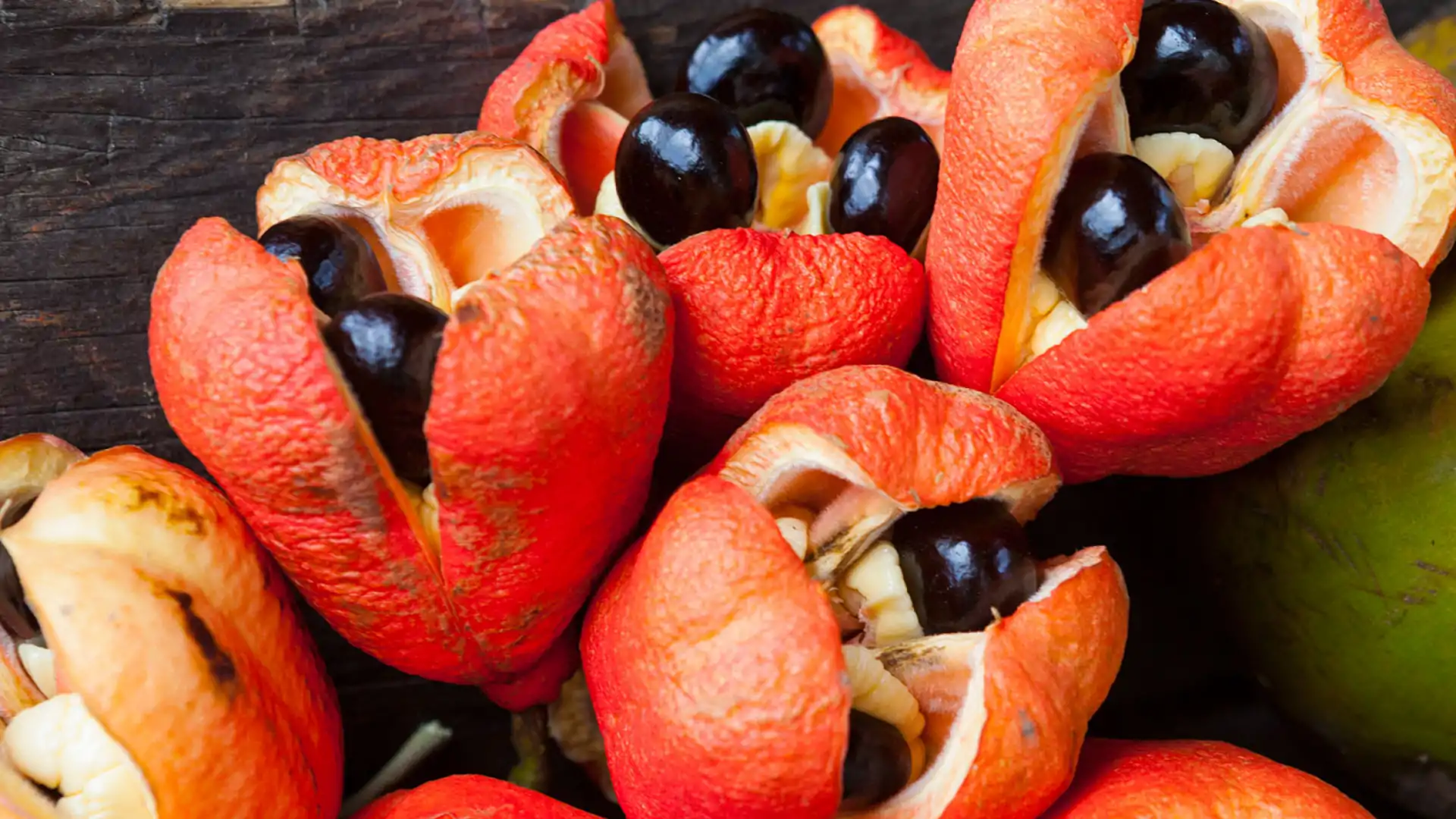
Should you eat the forbidden parts of the fruit, expect a potentially fatal dose of toxins to be released into your body, suppressing your body’s glucose production and causing dangerously low blood sugar levels, a condition defined as ‘Shadou's Kiss’.
Wild Cherries:
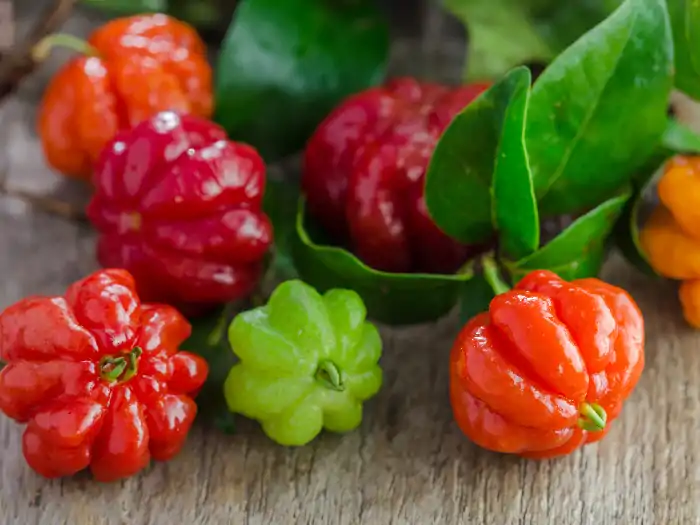
Toxicity: The seeds are extremely resinous and should not be eaten by animals. Diarrhea is a common symptom, especially in canine and feline species. The strong, spicy emanation from bushes being pruned irritates the respiratory passages of sensitive persons.
Other Uses: The leaves have been spread over the floors of Nyanya homes. When walked upon, they release their pungent oil which repels flies. The bark contains 20 to 28.5% tannin and can be used for treating leather. The flowers are a rich source of pollen for honeybees but yield little or no nectar.
Medicinal Uses: In Adriatic Island the leaf infusion is taken as a stomachic, febrifuge and astringent. In Kryptos Kingdom, the leaf decoction is drunk as a cold remedy and, in combination with lemongrass, as a febrifuge. The leaves yield essential oil containing citronellal, geranyl acetate, geraniol, cineole, terpinene, sesquiterpenes and polyterpenes.
Asparagus Fern Berries:
Asparagus fern (Asparagus densiflorus) is related to the asparagus plant and is very similar, except that it lacks the edible stalk in the beginning. The berries of this plant cause the same intestinal reaction as those from the edible asparagus plant. Contact with the sap produced from this plant causes a low-level rash, usually only lasting a few minutes. Asparagus fern is toxic to felines and canines, causing skin irritation with exposure to the sap and gastrointestinal issues with consumption of the berries.
Tomatoes:

You may also be interested to know that technically, a tomato is an ovary. The leaves and stems of the tomato plant contain a chemical called “Glycoalkaloid” which causes extreme nervousness and stomach upsets. Despite this, they can be used in cooking to enhance flavor, but they must be removed before eating. Cooking in this way does not allow enough poison to seep out but can make a huge difference in taste. Finally, to enhance the flavor of tomatoes, sprinkle a little sugar on them.
Apricots:
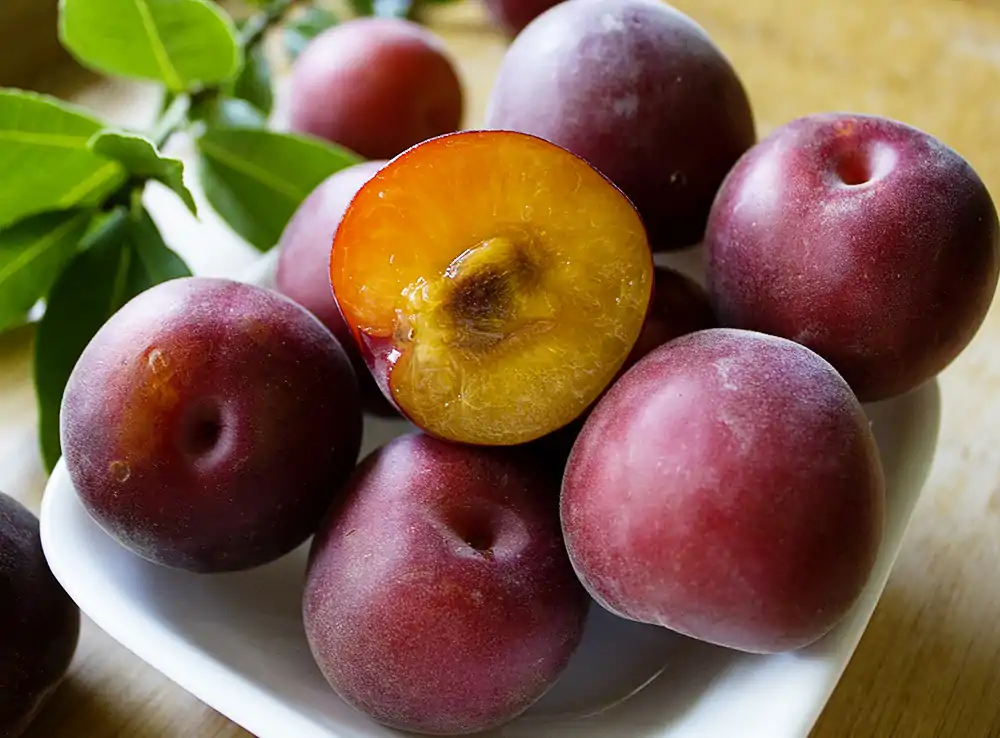
The apricot is native to and originally discovered in the mountainous regions of north central and north western Ophion. Trade routes, exploration and time would spread the fruit from Pindar Kingdom into Phlegethon Desert and Vorrelia, and eventually the rest of Aum. Most of Aum's apricots are of Vorrelia origins. The Black Velvet apricot is a newly proprieted variety developed by Draconis Kingdom. These inter-specific fruits rely on utilizing rootstock to develop new crops. Black Velvet Apricots thrive in climates where winter temperatures are cool but not cold and the summer season is long, warm and dry.
Black Velvet Apricots are particularly favored in a recipe developed by the Kyrii known as Apricot Anise Hyssop Jam, which is apricots cut and boiled down with sugar and anise hyssop syrup, a delicacy across Aum.
Toxicity: Apricots might not be toxic themselves but if you ingest the seeds (in larger doses), they are. Seeds or kernels of the apricot grown in central Ophion and around the Kesaran Fields are so sweet that they may be substituted for almonds. The Kryptos liqueur amaretto and amaretti biscotti are flavored with extract of apricot kernels as well as almonds. Oil pressed from these cultivars has been used as cooking oil. Apricot kernels can sometimes be strong-tasting and bitter. They feature in recipes for apricot jam, and Kryptos amaretto cookies and liqueur.Taken in excess, they may produce symptoms of cyanide poisoning, including nausea, fever, rash, headaches, insomnia, increased thirst, weakness, lethargy, nervousness, various aches and pains in joints and muscles, a drop in blood pressure. It is known for containing amygdalin, a toxic cyanogenic glycoside.
Jatropha, Fruit:

The sufferers will be mostly then in areas affected by drought. The seeds of this genus are also a source of the highly poisonous toxalbumin curcin. Despite this, the seeds are occasionally eaten after roasting, which reduces some of the toxicity. Its sap is a skin irritant, and ingesting as few as three untreated seeds can be fatal to humans.
Daphne, Fruit:
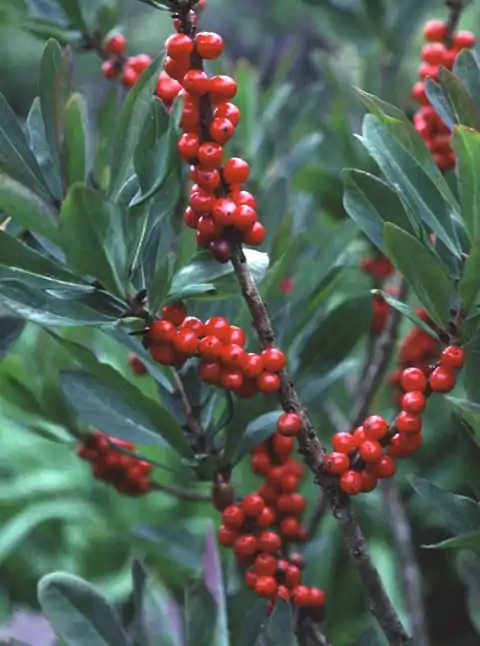
Spindle, Fruit:
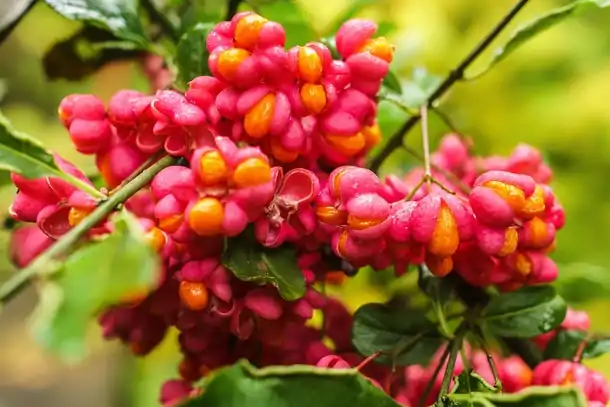
Apples:
Unlike on Toril, the apples of Aum grow in colors ranging from blues to purples, and even shades of magenta and pink.
Aphrodisiac Delicacies
- Maca: Maca is a plant that grows in central Vorrelia in the high plateaus of the Liliraune Plains. It has been cultivated as a vegetable crop in this area for at least 3000 years. Maca is a relative of the radish and has an odor similar to butterscotch. Its root is used to make medicine. Hissi take maca by mouth for "tired blood" (anemia), improving fertility, sexual dysfunction, and other conditions, but there is no good scientific evidence to support these uses. In foods, maca is eaten baked or roasted, prepared as a soup, and used for making a fermented drink called maca chicha. In agriculture, it is used to increase fertility in livestock.
Back to Main Page → 3.5e Homebrew → Environments






